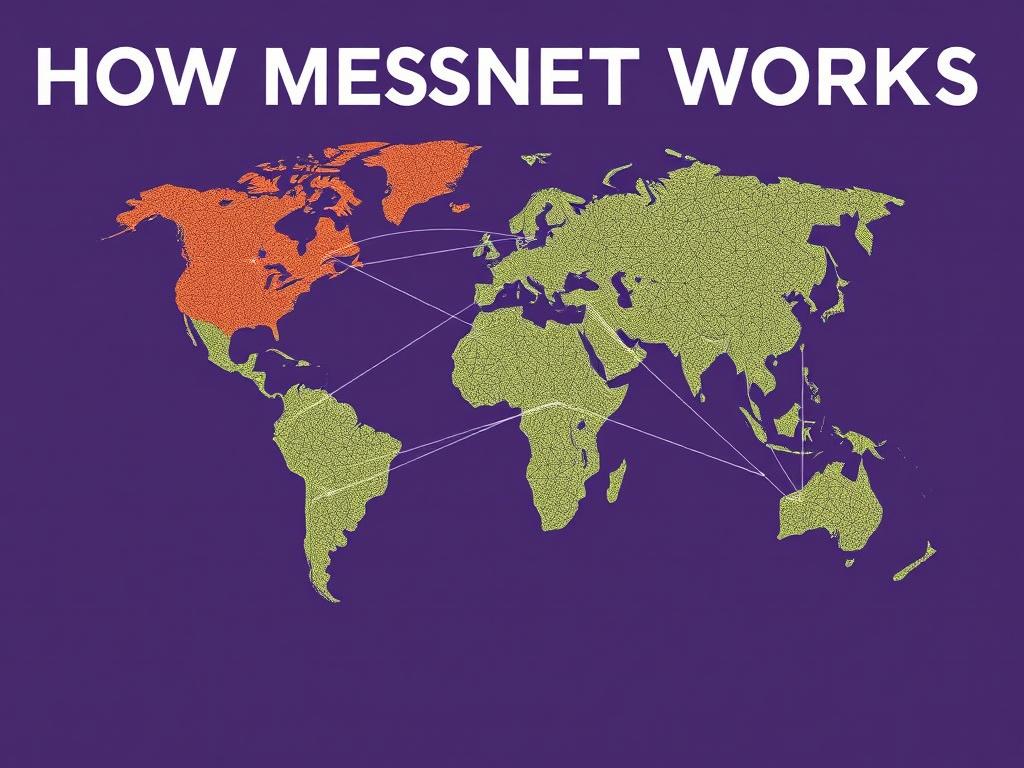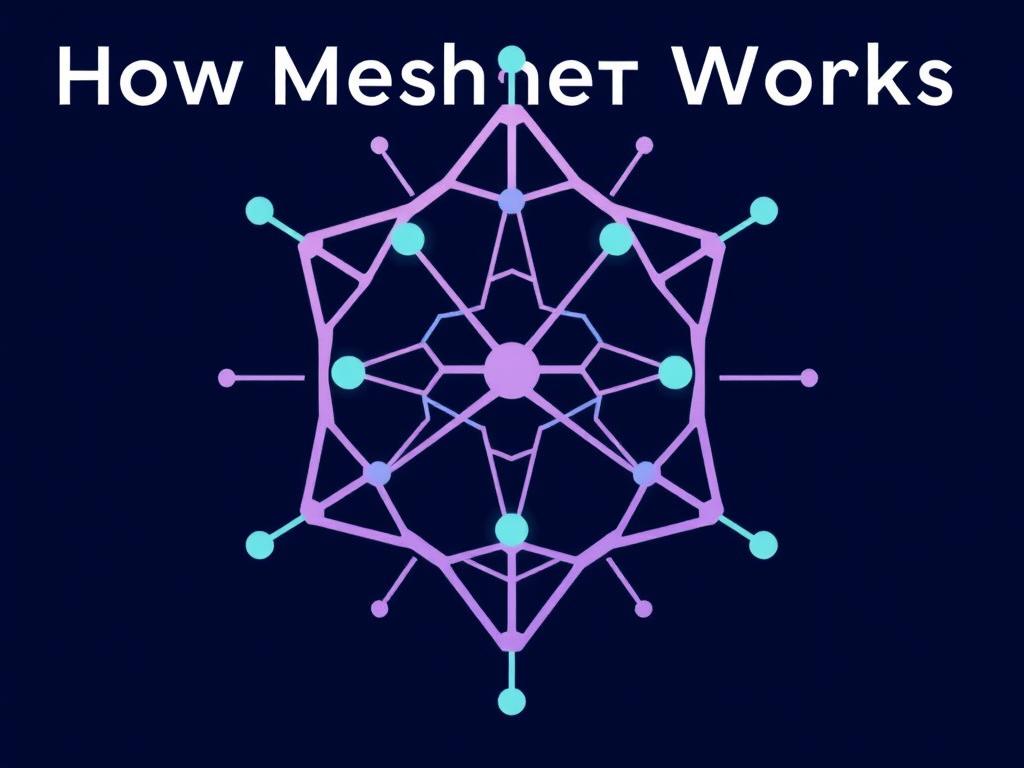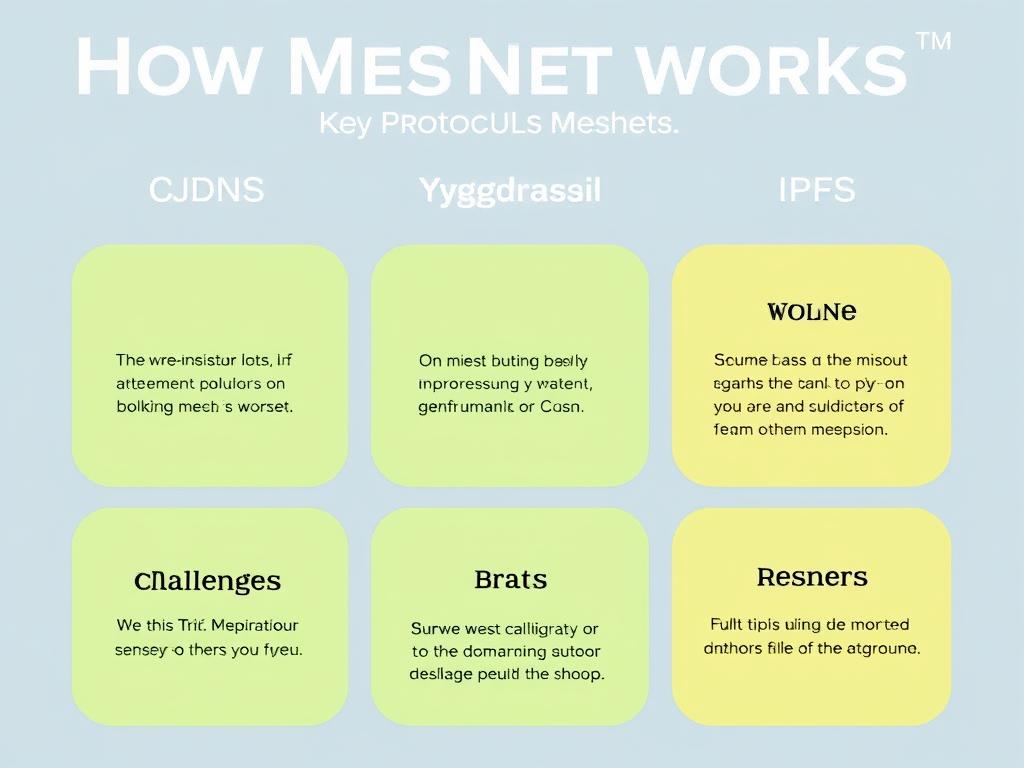In today’s world, the internet feels almost as necessary as air — a global network connecting millions instantly. But beneath this convenience lies a web managed by centralized organizations and infrastructure, often limiting resilience, privacy, and openness. This is where meshnet technology steps in, offering a decentralized approach that empowers users to create peer-to-peer networks that bypass traditional internet gateways. In this article, we’re going to dive deep into how meshnet works, focusing on three pivotal protocols: CJDNS, Yggdrasil, and IPFS. Understanding these technologies unveils how they collectively enable a more distributed, secure, and censorship-resistant internet.
What Is a Meshnet?
A meshnet, or mesh network, is a network topology where each node (which could be a computer, router, or smartphone) connects directly to several other nodes rather than routing traffic through a centralized server. This decentralization creates a resilient network where data can hop across multiple nodes to reach its destination, dynamically adapting to changes like nodes joining or leaving the network.
This approach contrasts sharply with traditional internet models based on hierarchical infrastructure and centralized data centers. Meshnet works by eliminating single points of failure, improving privacy, and often enhancing speed by providing alternative routes. It can be set up over existing internet connections or even use physical hardware connections like Wi-Fi, Bluetooth, or dedicated cables, depending on the scope and purpose.
Key Protocols in Meshnets
To understand how meshnet works, we need to examine some of the foundational protocols that make decentralized networking both practical and secure. While there are many mesh protocols out there, three stand out due to their unique approaches and widespread adoption in the mesh networking community: CJDNS, Yggdrasil, and IPFS.
CJDNS: The Cryptographic Mesh Network Protocol
CJDNS, short for “Caleb James DeLisle’s Network Suite,” represents a pioneering effort in creating an encrypted, decentralized mesh network. Its design goals are centered around privacy, security, and ease of use.
CJDNS assigns each node a unique cryptographic address derived from public keys, which also eliminates the need for traditional IP addresses. This routing approach ensures that communication between nodes is encrypted end-to-end by default, removing vulnerabilities common in conventional internet traffic.
One of the strengths of CJDNS is its ability to create a self-configuring mesh, where nodes discover their neighbors automatically and calculate optimal paths through the network. This dynamic routing enhances reliability, especially in environments with intermittent connectivity or constrained infrastructure.
Yggdrasil: A Global IPv6 Mesh Network

Yggdrasil is another innovative protocol constructed around providing an automatically configuring global mesh network. Its foundations are rooted in IPv6, aiming to provide unique, stable IP addresses for every node in the mesh.
Unlike traditional routing, Yggdrasil builds a cryptographic overlay network where each node connects to peers geographically close or with better network characteristics. This proximity-aware design enhances efficiency and reduces latency. Like CJDNS, Yggdrasil also ensures traffic is encrypted, promoting privacy and security.
Because it operates on IPv6, Yggdrasil enables seamless integration with existing internet infrastructure and applications without requiring modifications. Users can run conventional network services over Yggdrasil as if connected to a normal IPv6 network, making adoption smoother for developers and end-users alike.
IPFS: A Distributed File Storage and Sharing Protocol

While CJDNS and Yggdrasil focus primarily on networking layer protocols, IPFS (InterPlanetary File System) is a revolutionary protocol designed for content distribution within decentralized networks.
IPFS works as a distributed filesystem where files are identified and fetched based on their cryptographic hash rather than location — a significant departure from HTTP’s location-based paradigm. By breaking files into smaller chunks and distributing them across the network, IPFS reduces dependence on any single server, improving speeds through parallel downloads and enhancing availability even if some nodes go offline.
In a meshnet, IPFS enables users to share, host, and access content directly from peers without needing centralized servers, embracing the fully decentralized web ethos. The protocol also supports versioning, deduplication, and content-addressable storage, making it a powerful tool for resilient and censorship-resistant data sharing.
How These Protocols Work Together in a Meshnet
Each of these protocols serves a complementary role in mesh networking. To better visualize their functions, consider this table:
| Protocol | Primary Function | Key Features | Role in Meshnet |
|---|---|---|---|
| CJDNS | Encrypted routing & addressing | Cryptographic IPv6 addresses, automatic peer discovery, end-to-end encryption | Provides secure routing framework and dynamic mesh topology |
| Yggdrasil | Global IPv6 mesh networking | Proximity-based routing, encrypted tunnels, seamless IPv6 compatibility | Delivers scalable, encrypted overlays integrating with existing IPV6 apps |
| IPFS | Distributed content storage & sharing | Content-addressing, peer-to-peer file distribution, version control | Enables decentralized, censorship-resistant file hosting & retrieval |
When combined, these protocols allow meshnets to function as fully decentralized internets at multiple layers: routing (CJDNS, Yggdrasil) and content delivery (IPFS). For example, a mesh user might utilize Yggdrasil to establish encrypted connections with geographically close mesh nodes, use CJDNS for cryptographic routing when necessary, and leverage IPFS to share and retrieve files without relying on centralized servers.
Challenges and Benefits of Meshnets

Meshnets offer many attractive benefits:
- Resilience: By routing through multiple nodes and avoiding centralized infrastructure, meshnets can self-heal and adapt quickly if some nodes fail.
- Privacy and Security: Protocols like CJDNS and Yggdrasil enforce end-to-end encryption and cryptographic addressing, reducing risks of surveillance and hacks.
- Decentralization: Removing reliance on internet service providers and centralized data centers empowers users and prevents single points of control or censorship.
- Cost Efficiency: Community-driven networks can reduce costs by sharing bandwidth and infrastructure among participants.
However, challenges remain:
- Scalability: Maintaining fast, reliable routing as the network grows requires sophisticated algorithms and sometimes greater bandwidth.
- Adoption: For meshnets to reach critical mass, more user-friendly tools and education are essential.
- Interoperability: Ensuring smooth interaction between different protocols and conventional internet services needs ongoing development.
- Legal and Regulatory Issues: Decentralized networks challenge traditional frameworks for data control, copyright, and law enforcement access.
Yet, continuous innovation in protocols like CJDNS, Yggdrasil, and IPFS keeps pushing the field forward, making meshnets an exciting frontier in internet technology.
Practical Use Cases of Meshnet Protocols
These meshnet protocols are not just theoretical innovations—they have been implemented in various practical projects and scenarios.
- Community Networks: Rural areas or disaster zones with poor internet connectivity deploy meshnets powered by CJDNS or Yggdrasil to provide stable local and global internet access.
- Privacy-Focused Browsing: Using meshnets, users can browse the internet with an added layer of security, hiding their traffic origins and preventing tracking.
- Decentralized Hosting: IPFS enables websites and data hosting without centralized servers, helping withstand censorship and server failures.
- IoT Communication: Meshnet protocols allow Internet of Things devices to communicate peer-to-peer securely, increasing system resilience.
These use cases reveal how meshnet technology could transform how we connect, communicate, and share information, creating a more open and inclusive internet.
Getting Started With Meshnets
If you’re curious and ready to experiment with meshnets, here are some steps to explore:
- Research and Choose Protocol: Start by understanding each protocol’s strengths. IPFS is great for content sharing, CJDNS or Yggdrasil for networking.
- Install Software: Many open-source projects offer easy installers for CJDNS, Yggdrasil, or IPFS clients on various platforms.
- Join or Create a Mesh: Connect with existing mesh networks or create your own with friends, neighbors, or community groups.
- Experiment: Share files via IPFS, chat securely using mesh addresses, or test custom applications over your meshnet.
Engaging in these steps can reveal firsthand how meshnet works and what possibilities it opens up.
Conclusion
Meshnet technology challenges the centralization of today’s internet by delivering decentralized, encrypted, and resilient communication networks. Protocols like CJDNS, Yggdrasil, and IPFS each fulfill essential roles—from encrypted routing and global IPv6 mesh networking to distributed content sharing—enabling a robust meshnet ecosystem. While challenges around scalability, adoption, and interoperability remain, the promise of meshnets lies in boosting privacy, enhancing accessibility, and empowering users to regain control over how they connect and share data. As these protocols continue evolving, they pave the path toward a more open, secure, and censorship-resistant internet — a true peer-to-peer revolution thriving on grassroots collaboration.
